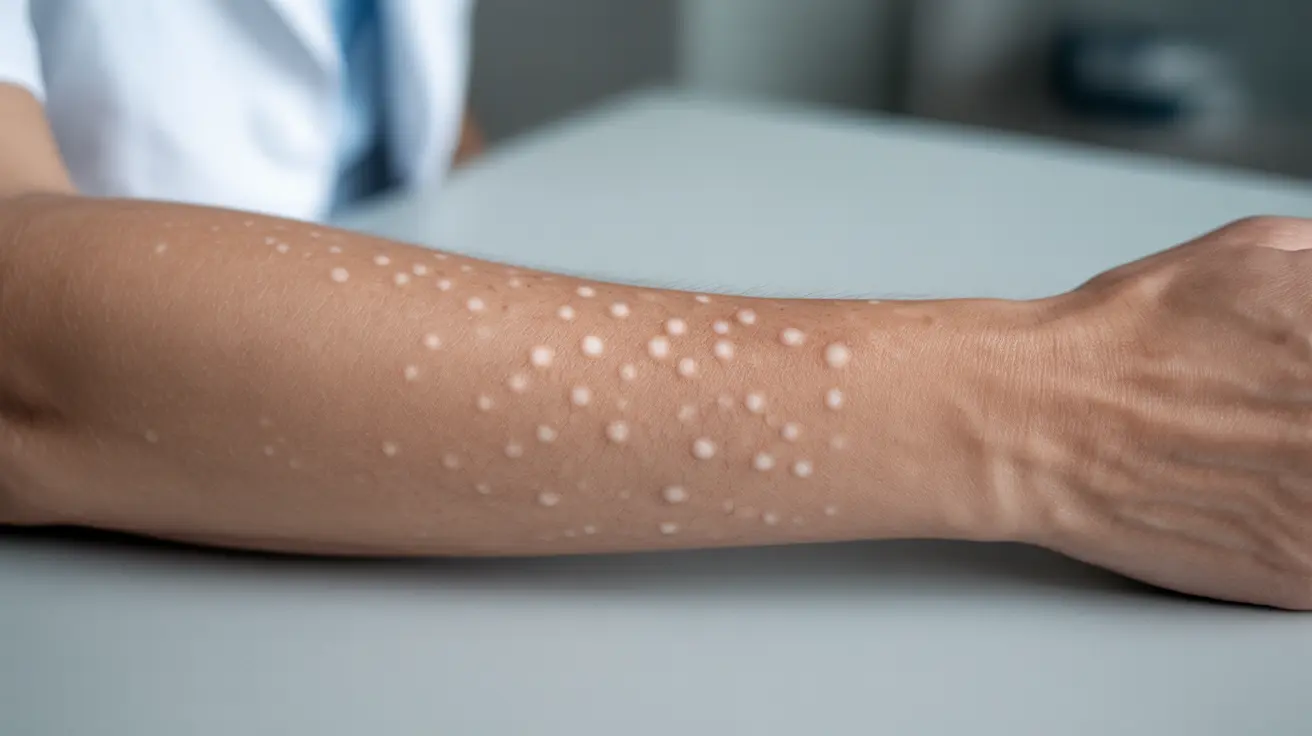Idiopathic guttate hypomelanosis (IGH) is a common skin condition characterized by small, white spots that typically appear on sun-exposed areas of the body. While this condition is completely harmless, many people seek information about its causes and treatment options for cosmetic reasons. Understanding IGH can help you better manage this condition and determine whether medical intervention is necessary.
This article explores the essential aspects of idiopathic guttate hypomelanosis, including its symptoms, causes, treatment options, and ways to differentiate it from similar skin conditions.
What Is Idiopathic Guttate Hypomelanosis?
Idiopathic guttate hypomelanosis presents as round or oval white spots, typically 2-5 millimeters in diameter, that develop gradually over time. The term "idiopathic" means the exact cause is unknown, "guttate" refers to the drop-like appearance of the spots, and "hypomelanosis" indicates a reduction in melanin, the pigment that gives skin its color.
Common Symptoms and Characteristics
The primary characteristics of idiopathic guttate hypomelanosis include:
- Small, porcelain-white spots
- Round or oval shape
- Smooth surface
- Most common on arms, legs, and face
- Typically appears after age 20
- More noticeable in people with darker skin tones
Risk Factors and Causes
While the exact cause remains unclear, several factors may contribute to the development of idiopathic guttate hypomelanosis:
Sun Exposure
Prolonged sun exposure is considered a significant contributing factor, as IGH spots commonly appear on sun-exposed areas of the body. This suggests that UV radiation may play a role in the condition's development.
Aging Process
The condition becomes more common with age, suggesting that natural aging processes may contribute to the development of these white spots. Most people begin noticing spots after age 20, with increased prevalence in older adults.
Treatment Options and Management
While idiopathic guttate hypomelanosis doesn't require medical treatment for health reasons, several options are available for those seeking cosmetic improvement:
Topical Treatments
- Topical retinoids
- Steroid creams
- Vitamin D analogs
- Chemical peels
Medical Procedures
More aggressive treatments may include:
- Cryotherapy
- Dermabrasion
- Laser therapy
- Superficial excision
Prevention Strategies
While complete prevention may not be possible, certain measures can help reduce the risk or progression of IGH:
- Using broad-spectrum sunscreen daily
- Wearing protective clothing
- Limiting sun exposure during peak hours
- Maintaining good skin hydration
- Using gentle skincare products
Frequently Asked Questions
What are the typical symptoms of idiopathic guttate hypomelanosis?
The typical symptoms include small, round or oval white spots measuring 2-5 millimeters in diameter. These spots are flat, smooth, and typically appear on sun-exposed areas like the arms, legs, and face.
How is idiopathic guttate hypomelanosis treated for cosmetic purposes?
Cosmetic treatments include topical medications like retinoids and steroids, as well as medical procedures such as cryotherapy, dermabrasion, and laser therapy. The choice of treatment depends on the severity of the condition and individual preferences.
Can prolonged sun exposure cause idiopathic guttate hypomelanosis?
While the exact cause is unknown, prolonged sun exposure is considered a significant contributing factor to IGH development, as the spots commonly appear on sun-exposed areas of the body.
Are there any effective ways to prevent idiopathic guttate hypomelanosis from developing or worsening?
While complete prevention may not be possible, using sun protection, including sunscreen and protective clothing, can help reduce the risk and progression of IGH. Maintaining good skin health through proper hydration and gentle skincare practices may also be beneficial.
What are the differences between idiopathic guttate hypomelanosis and other skin conditions that cause white spots?
IGH spots are typically smaller, round or oval, and have smooth surfaces. Unlike conditions such as vitiligo or tinea versicolor, IGH spots don't spread or change significantly over time, remain small in size, and are not associated with scaling or inflammation.




